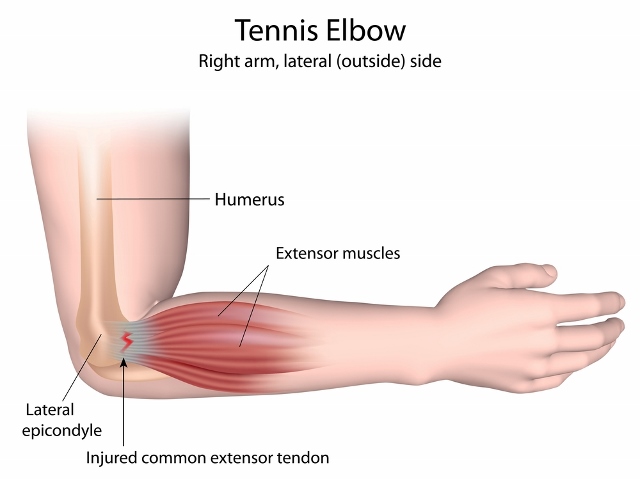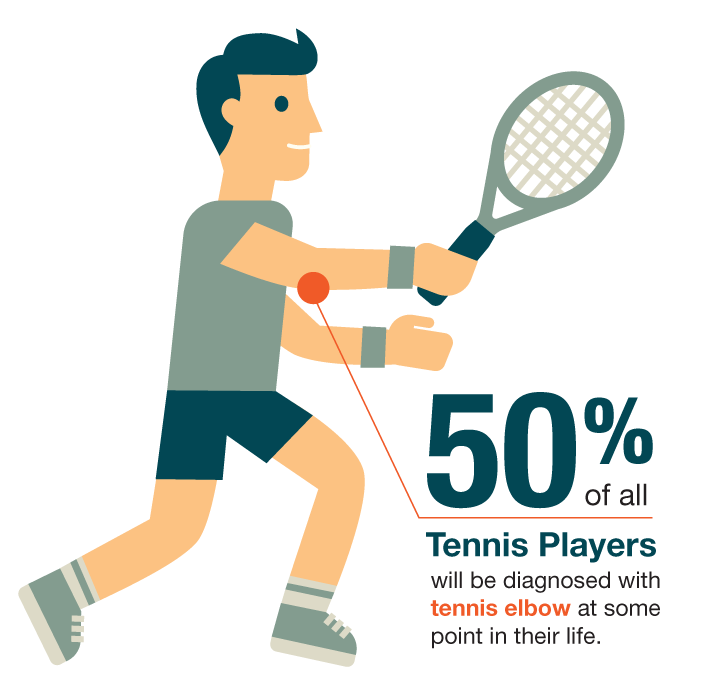What Is It?
Tennis elbow (lateral epicondylitis) is a common term for a condition caused by overuse of arm and forearm muscles that results in elbow and/or forearm pain. You don’t have to play tennis to get this, but the term came into use because it can be a significant problem for some tennis players.
Tennis elbow (lateral epicondylitis) is a common term for a condition caused by overuse of arm and forearm muscles that results in elbow and/or forearm pain. You don’t have to play tennis to get this, but the term came into use because it can be a significant problem for some tennis players.
It is caused by either abrupt or subtle injury of the muscle and tendon area around the outside of the elbow.
Tennis elbow specifically involves the area where the muscles and tendons of the forearm attach to the outside bony area (called the lateral epicondyle) of the elbow.
Golfer’s elbow refers to the same process occurring on the inside of the elbow.
Tennis elbow most commonly affects people in their dominant arm but it can also occur in the non-dominant arm or if you are very unfortunate, both.arms. It affects men more than women between the ages of 30 and 50, although people of any age can be affected.
Symptoms Include:
-
Pain slowly increasing around the outside of the elbow. Less often, pain may develop suddenly.
-
Pain is worse when shaking hands or squeezing objects.
-
Pain is made worse by stabilising or moving the wrist with force. Examples include lifting, using tools, opening jars, or even handling simple utensils such as a toothbrush or knife and fork.
As well as tennis players, it also affects people who participate in leisure or work activities that require repetitive arm, elbow and wrist movements or gripping; such as carpentry, typing, painting, raking, knitting and housework! There have even been reports of tennis elbow type injuries from playing active video games, such as the Wii, PlayStation and X-Box.
How We Can Help:
We can offer immediate diagnosis and treatment. Tennis elbow usually responds well to manual therapy relieving some or all of the symptoms. This can include electrotherapy, massage to loosen the forearm muscles, gentle mobilisation of the elbow joint, dry needling and kinesiology taping to temporarily support the joint. If necessary, our in-house GP can administer cortisone injection therapy.
For more information, a free telephone consultation with one of the Team or to book an appointments, please call reception 01621 927077. You can also book you appointment online here!

